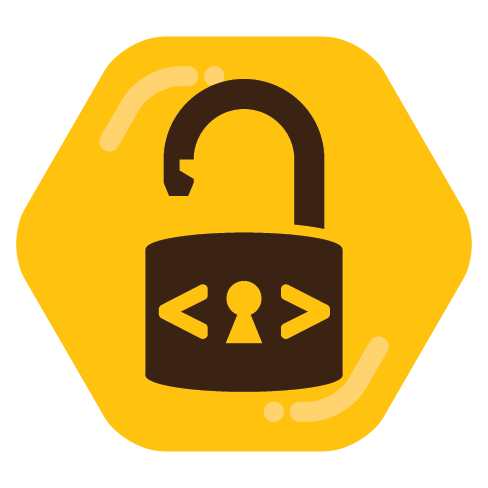Actually a lot of it is made in the US. Shin Ramen, for example, is from Korea, but all the packages I’ve seen are made in a factory in California.
AbsentBird
- 8 Posts
- 252 Comments

 4·5 days ago
4·5 days agoIf that’s how you treat people you shouldn’t be surprised when they ‘cause a fuss’ and kick you out.
What do they gain by continuing the war?
It’s hardly in Russia’s interest for their sons to die, their equipment to explode, and their economy to crumble. It’s self destructive, which it has in common with capitalism, but worse than that it’s a genocide of the Ukrainian people.
Plans are in motion. See you at 50501 on Wednesday.
Russia could foil all those plans by simply ceasing the invasion and going home.
By my estimation, of those 126: 80 are a win for X (or whoever goes first), 30 are a win for O (or whoever goes second), and 16 are a stalemate.
So the number of losing positions depends on whether you go first or second.
Good point. There’s only 126 filled arrangements that are valid game states.

 11·5 days ago
11·5 days agoBritain picked fights with the French, the Spanish, and Austria, then expected their colonies to foot the bill.
There are only like 500 losing tictac toe scenarios max.
Three positions for each square (X, O, or blank), 9 squares: 3^9 = 19,683 possible game states.
Of those there are only 512 combinations where the board is compete: 2^9 = 512
Of those 512, only 16 combinations results in a win for either player. Meaning there are only 8 losing scenarios and 496 stalemate scenarios.
There are people who are categorically opposed to forcefully compelling people, and many of them use the word ‘authoritarian’.
It can be a useful term, not all systems are equally authoritarian. It’s a spectrum.
I thought that was from David Rovics.
I asked “What happened at Tiananmen Square?” and this is what it said:
The events at Tiananmen Square in 1989 began as student-led demonstrations in Beijing, initially sparked by mourning for reformist Communist Party leader Hu Yaobang in April. The protests quickly escalated into widespread calls for political and economic reforms, anti-corruption measures, and democratic freedoms (history.state.gov). By late May, the government declared martial law and deployed military forces, but citizens initially blocked troops from entering the city. Protesters occupied the square, erecting the iconic “Goddess of Democracy” statue, while Western media broadcast live coverage of the standoff (britannica.com). By early June, however, Chinese authorities ordered a violent crackdown. Troops and tanks advanced into the square, opening fire on demonstrators and bystanders. Witnesses reported civilians shot in the back or crushed by military vehicles, though the exact death toll remains unknown due to government censorship (amnesty.org.uk). The Chinese Communist Party later suppressed all public discussion of the event, erasing it from official records and education materials. Globally, the crackdown became a symbol of authoritarian repression, while Tiananmen Square itself—originally expanded in the 1950s to showcase Maoist grandeur—remains a politically charged site (wikipedia.org) (bbc.com).

 6·11 days ago
6·11 days agoMake the chips in Guadalajara, ship them out of Puerto Vallarta to Vancouver to power server farms in Surrey; cut the US out entirely.

 4·11 days ago
4·11 days agoHell, use the waste heat to power hot water heaters or something. It blows my mind that we don’t do more cloud computing in cold environments. The servers produce heat, the people need heat, solve one problem with another. Instead we seem to be putting them in the driest and hottest climates available.

 1·11 days ago
1·11 days agoIdk, I like CSS, but I come from a web development background. Modern JS (ES4+) is fully capable of replacing CSS using the style property.
JSX is sort of like a singular language to do all three.
HTML isn’t perfect, but I can’t think of a better language for writing documents. TEX is unintuitive, PDF is opaque, markdown is just HTML shorthand.

 41·11 days ago
41·11 days agoJust use React or something, you can use a single syntax for all three. It makes total sense why the syntax is different if you think about when and why they were made. We had HTML for years before CSS, and it was longer still until we got JavaScript. Each language has a different purpose, so naturally a different syntax makes sense. Your hill is poorly defended.

 3·12 days ago
3·12 days agoGU24 is wack, especially for home lighting. I think they aren’t made much anymore.

 1·12 days ago
1·12 days agoI agree with you, but I don’t think that makes it a poor example; those different cables aren’t competing standards, they’re different types of USB-C cables. They should absolutely label the cables though, big oversight on the standard there.

 51·12 days ago
51·12 days agoThose aren’t different standards, they’re just different USB-C cables. It’s like saying light bulb sockets aren’t a unifying standard because there’s different bulbs with different wattages. The fact that all those cables work over the same standard is an example of how ubiquitous the standard is. That said they should be labeled better, like how USB3 was color coded blue; each cable could have a color strip to distinguish it.












Asking for a solution to the question of what to do with a type of person. That’s the reason the Nazis built concentration camps too.
Turns out you don’t actually need to imprison people in extrajudicial torture camps, you can just treat them with a shred of human decency instead.
Like we’ve been dealing with immigrants for centuries, practically every nation has, we don’t need a ‘final solution’, we can process them individually and find solutions dynamically based on the needs and situation of the individual. Sometimes that means deportation, sometimes it means granting asylum, and sometimes it means working with our allies to find a suitable destination. Imprisoning them in Guantanamo bay is not a solution, it’s a pretense for extermination.